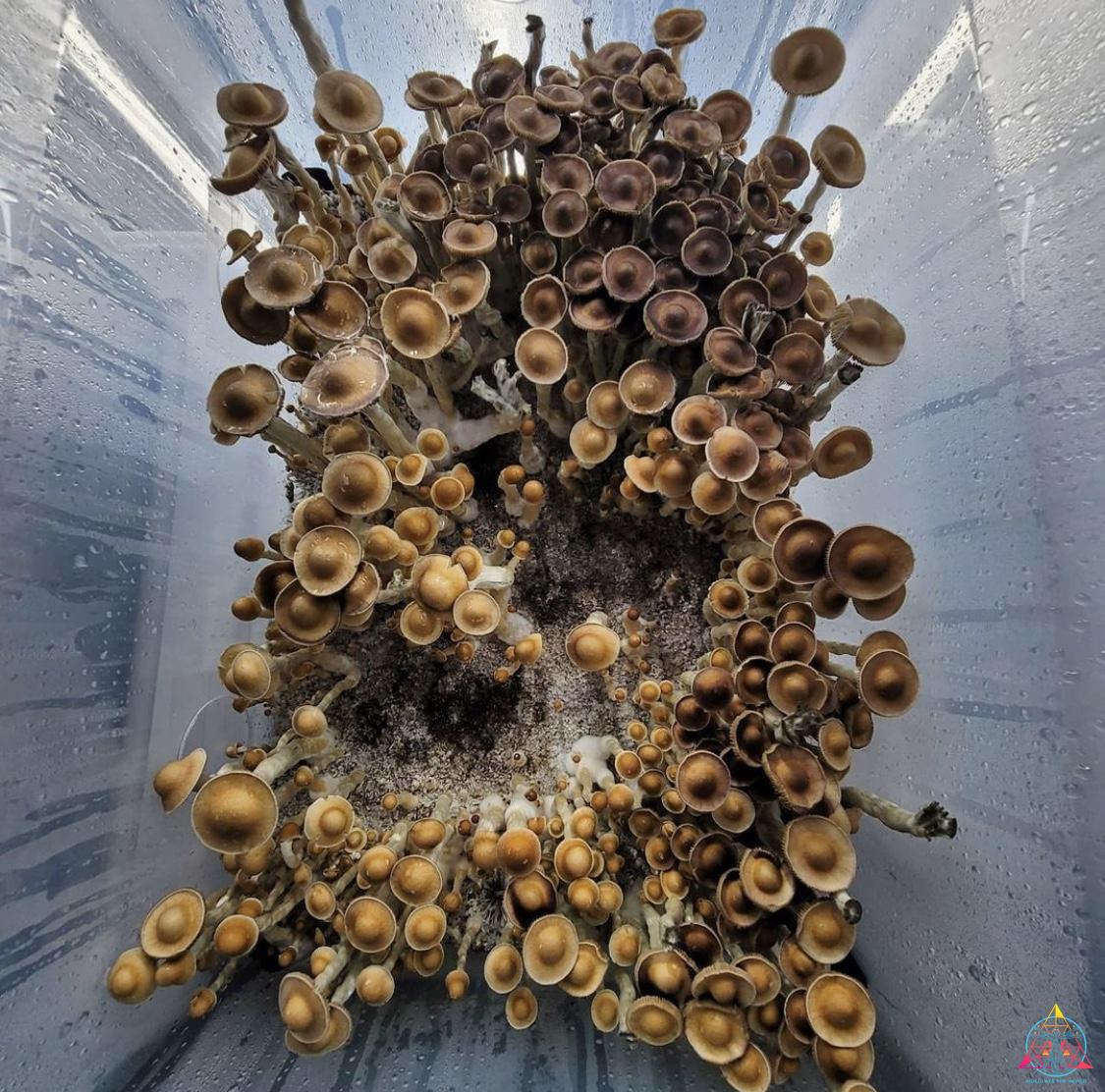
Wooden coffins? That trend is so dead.
With a goal of making the human burial — and decomposition — process more environmentally-friendly, a company has invented the Living Cocoon, a coffin made from mushrooms that returns the deceased to the earth while enriching it.
Invented by Delft University of Technology researcher Bob Hendrikx and his Netherlands-based company Loop, the Living Cocoon (aka the Loop Cocoon) claims to be the first “living coffin” on Earth. Loop makes the cocoon out of mycelium, a living fungus that reproduces via spores and naturally grows underground amongst the roots of trees, plants, and fungi. Not only is mycelium biodegradable, but it also has a few special powers — it provides nutrients to the plants growing around it, it can neutralize toxic substances, and it can clean up soil by converting waste products into nutrients.
When buried in a traditional coffin, human bodies typically take at least 10 years to break down. The Living Cocoon typically composts and disappears in just 30 to 45 days, and the body inside breaks down in two to three years.
And unlike the traditional coffin burial process, which pollutes the soil due to the chemicals used to preserve the body, the non-biodegradable materials buried, and more, the Living Cocoon actually provides nutrients to the surrounding soil.
Annually, U.S. cemeteries use 827,060 gallons of embalming fluid, (including the carcinogenic formaldehyde) to preserve bodies; 2,700 tons of copper and bronze and 30 million board feet of hardwoods for caskets; and 1,600,000 tons of reinforced concrete and 14,000 tons of steel for vaults, according to the Funeral Consumers Alliance of Minnesota via the Minnesota Pollution Control Agency.
“The Living Cocoon enables people to become one with nature again and to enrich the soil, instead of polluting it,” Hendrikx said in a statement.
A limited first run of the Living Cocoon is currently available for purchase on Loop’s website to buyers in the U.S. and Europe, for €2,000.00 ($2,343 USD).
Many states do not allow for green burials, so if you are interested in the Living Cocoon, you’ll have to research if you are even legally allowed to use it where you live. And if you happen to live in the Netherlands, Loop is displaying the Living Cocoon at the (Re)Design Death exhibition in the Cube Design Museum in Kerkrade, from Sept. 21, 2020 through Jan. 24, 2020.
While the Living Cocoon is pretty revolutionary, it is not the first time mushrooms have been used to aid in the burial process. There’s also the mushroom-based Infinity Burial Suit, designed by the brand Coeio along with sustainable fashion designer Zero Waste Daniel. The suit is made of mushrooms and other microorganisms that help neutralize toxins in human bodies and enrich the soil, and it spiked in popularity in 2019 after actor Luke Perry was buried in one. The Infinity Burial Suit and the coffin certainly share some similarities, but perhaps the coffin will appeal to a wider audience, since it better resembles a traditional burial vessel.
Related Articles
Forage to Feast: Exploring the Biology and Culinary Magic of Morel Mushrooms
It’s a mild spring day, with the warm sun casting flecks of light on the forest floor. Deciduous tree branches tangle together overhead and close in around a grassy depression, likely the remnant of a past disruption or abandoned pathway. The mushroom forager...
The Mushroom of Immortality: Learn About Medicinal Reishi Mushrooms
Reishi, along with the entire Ganoderma Genus, is prized for its health benefits, and is among the most unique-looking fungi in our collection. In this article, we’ll discuss some of the health benefits of Reishi mushrooms and Ganoderma as a whole. We’ll also discuss...
Washington’s New Psilocybin Therapy Bill & The Future of Legal Mushrooms
At the beginning of this year, Senator Jesse Salomon along with thirteen co-sponsors, filed Senate Bill 5201. This bill would allow for psilocybin-assisted therapy in Washington State. If passed, it would structure regulations for licensed therapeutic programs using...











